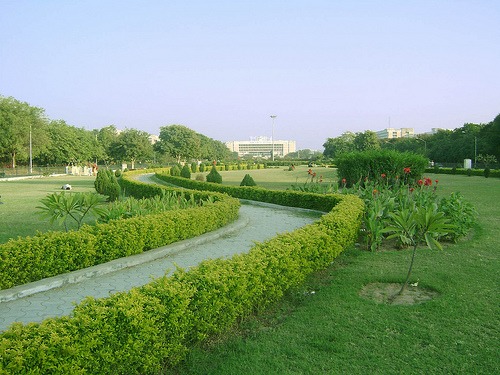The Japanese government announced yesterday that it would sign a free trade agreement with India that would eliminate 94 percent of trade tariffs over the next decade. The partnership between two of Asia's leading innovators runs much deeper than sending goods across the boarder though. It's also sprouting a network of "green cities." Historically, India and Japan have had strong relations politically and commercially, a result of the spread of Buddhism coming from India via China to Japan in the 6th century A.D.
 During World War II, the Indian National Army was employed by the Japanese Imperial Army in Japan's efforts against British forces. Japanese commercial giants like Honda, Sony, and Toyota have long been operating manufacturing plants in India and one of Japan's most successful companies, Suzuki, has a strong partnership with the largest car manufacturer in India, Maruti. In December, 2006, India and Japan signed the Joint Statement Towards Japan-India Strategic and Global Partnership. Since then, the two countries have participated in annual summits, which have culminated in projects such as the Delhi Metro and the JET Program.
During World War II, the Indian National Army was employed by the Japanese Imperial Army in Japan's efforts against British forces. Japanese commercial giants like Honda, Sony, and Toyota have long been operating manufacturing plants in India and one of Japan's most successful companies, Suzuki, has a strong partnership with the largest car manufacturer in India, Maruti. In December, 2006, India and Japan signed the Joint Statement Towards Japan-India Strategic and Global Partnership. Since then, the two countries have participated in annual summits, which have culminated in projects such as the Delhi Metro and the JET Program.In November, 2010, India and Japan unveiled a plan to launch 24 green cities along the Delhi-Mumbai Industrial Corridor. These green cities will have optimized energy supplies, 24-hour potable water supply, bicycle and walking paths, and water and waste recycling systems. Preparatory work has begun on pilot projects in seven green cities expected to be part of the DMIC. "Green cities and green technologies will be an important part of the DMIC. It will be like forging a sort of a green alliance between India and Japan," said Aftab Seth, a former Indian ambassador to Japan.
Japan's reputation as a world leader in green technologies adds tremendous credibility to the possibilities of these green cities. Companies like Hitachi, Mitsubishi, and Toshiba are all expected to participate in the design and construction of eco-friendly towns in seven states. Because Japan is more energy efficient than India, the development of green cities will allow knowledge sharing across the nations, with the end goal being improved energy efficiency and overall quality of life for citizens of the green cities and, eventually, all of India.

India has a lot to learn from Japan: despite the massive difference in size of the two countries, Japan at one point was the shining star of Asia and now, even after all its economic woes, is still the world's third largest economy. India's potential though seems to supersede what global expectations were of Japan twenty years ago.
It cannot be denied that part of the motivation for strengthening the tie between India and Japan is to counter China's progress. But the two countries are capitalizing on a unique opportunity to set a worldwide example of the future of urban planning and development. The combination of state-of-the-art infrastructure supporting transportation functions and the modernity of "green" living is an innovative idea and can very well change the way the world—both developed and developing—will view international relations in the context of readying for the future.

















No comments:
Post a Comment